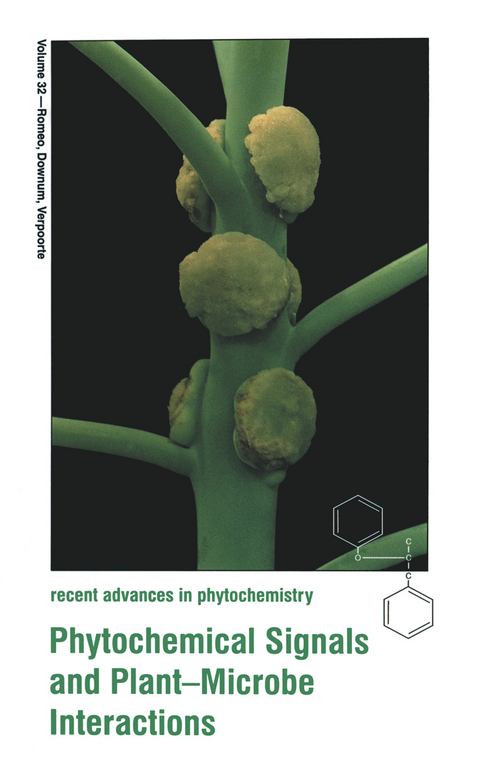
Phytochemical Signals and Plant-Microbe Interactions
Springer-Verlag New York Inc.
978-1-4613-7431-2 (ISBN)
The papers assembled in this volume were originally presented at the joint meeting of the Phytochemical Society of North America and Phytochemical Society of Europe held in Noordwijkerhout, The Netherlands, April 20-23, 1997. The meeting was organized by an international panel of scientists from both societies. The symposium from which the related contributions on phytochemi- cal signaling and plant-microbe interactions were taken was entitled "Commu- nication of Plants with the Environment." The chapters included in this volume cover traditional areas in plant chemical ecology, as well as address fundamental issues on the involvemerrt ofphytochemicals in intra- and interspecific signaling, applications of the knowledge gained from such studies, and evolutionary origins. T.he term microbes is used here in the broadest sense to encompass bacteria, fungi, and nematodes. An array of plant and fungal metabolites ranging from simple phenolics, salicylic acid, hydroxamic acids, flavonoids, polysaccharides, fatty acid derived octadecanoids, to trichothecenes and perylenequinones are discussed.
A number of important themes emerge: i) the multifunctional roles of many phytochemi- cals, ii) the power of molecular techniques for studying biosynthetic pathways and gene function, iii) the central role of natural products in pathogenesis and disease resistance, and iv) the identification of promising areas for future research and development of applications. The opening chapter by Osbourn et al. discusses the emerging role and significance of saponins as antifungal agents, compounds already well-docu- mented as important mediators of plant-insect interactions. McCormick et al.
1. Saponins and Plant Defense.- 2. Role of Toxins in Plant Microbial Interactions.- 3. Active Oxygen in Fungal Pathogenesis of Plants: The Role of Cercosporin in Cercospora Diseases.- 4. Tree-Fungus Interactions in Ectomycorrhizal Symbiosis.- 5. Allelochemicals in Root Exudates of Maize: Effects on Root Lesion Nematode Pratylenchus zeae.- 6. Chemical Signals in the Plant—Nematode Interaction: A Complex System?.- 7. Salicylic Acid-Mediated Signal Transduction in Plant Disease Resistance.- 8. Biosynthesis of Rhizobial Exopolysaccharides and Their Role in the Root Nodule Symbiosis of Leguminous Plants.- 9. Flavonoids as Regulators of Plant Development: New Insights from Studies of Plant—Rhizobia Interactions.- 10. Fatty Acid-Derived Signaling Molecules in the Interaction of Plants with Their Environment.- 11. Interactions between Agrobacterium tumefaciens and Plant Cells.- 12. Wound and Defense Responses in Cassava as Related to Post-Harvest Physiological Deterioration.
| Erscheint lt. Verlag | 24.10.2012 |
|---|---|
| Reihe/Serie | Recent Advances in Phytochemistry ; 32 |
| Zusatzinfo | X, 254 p. |
| Verlagsort | New York, NY |
| Sprache | englisch |
| Themenwelt | Sachbuch/Ratgeber ► Natur / Technik ► Garten |
| Medizin / Pharmazie ► Medizinische Fachgebiete ► Pharmakologie / Pharmakotherapie | |
| Naturwissenschaften ► Biologie ► Biochemie | |
| Naturwissenschaften ► Biologie ► Botanik | |
| ISBN-10 | 1-4613-7431-6 / 1461374316 |
| ISBN-13 | 978-1-4613-7431-2 / 9781461374312 |
| Zustand | Neuware |
| Haben Sie eine Frage zum Produkt? |
aus dem Bereich


